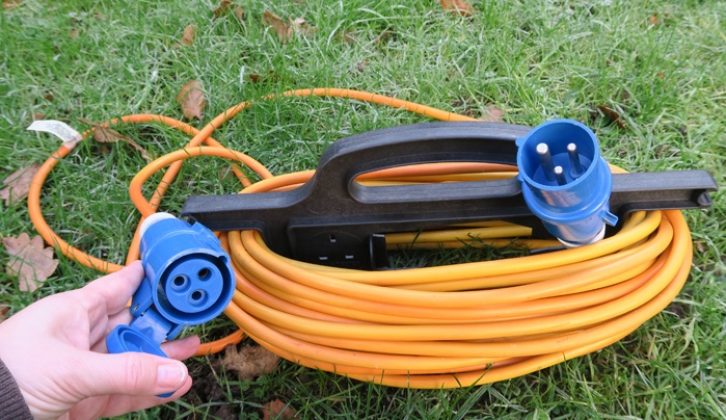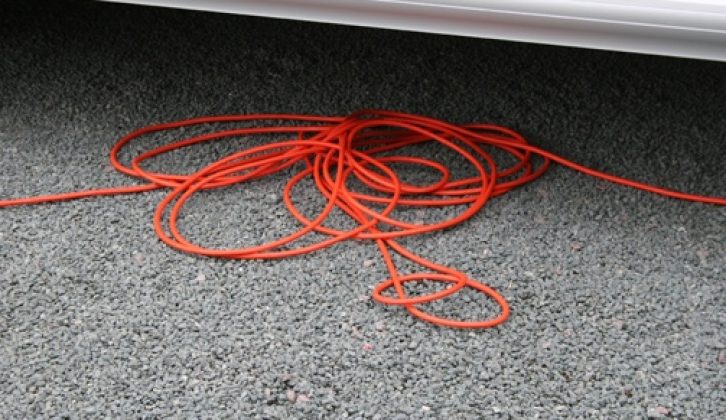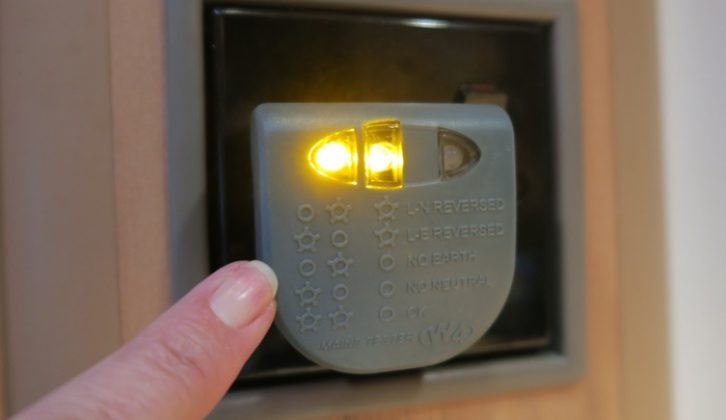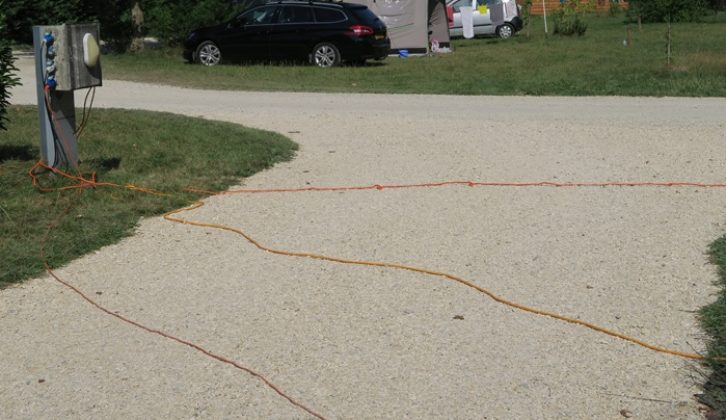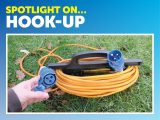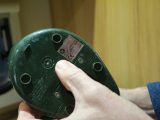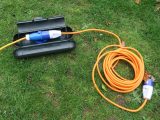Most motorcaravanners like to run a range of electrical appliances while they are on electric hook-up, but some take for granted the amount of electricity supplied.
Most UK sites have 16A hook-up points, although there are some with lower-rated supply. It is not unusual for power in the Netherlands, for example, to vary between 4A and 10A.
Quite often when we are camping, my daughter (Emily, 15) will be busy straightening her hair, while my son (Daniel, 11) is using his tablet, husband (Nigel) is working on his laptop, and I’ve got the key task of making tea. It has been known for us to trip out our hook-up unit!
So how can you avoid tripping out your hook-up supply? Here are some tips for using the power safely.
Hooking up safely
All modern motorhomes should be supplied with a 25m flexible cable (usually orange, so it can be seen in the grass to avoid people tripping over it), with three-pin blue connectors suitable for UK sites. They should comply with BS EN 60309-2.
Unwind your hook-up cable and lay it underneath your ‘van. Make sure you fully unwind it, or the cable could overheat and even catch fire.
Insert the blue connector with the recessed tubes (female end) into your motorhome’s input socket.
Connect the male end (with the pins) to the hook-up unit, ensuring you have laid the cable flat so nobody trips over it. The current is now flowing to your consumer unit.
Carry out a safety check by pressing the test button to confirm the master switch trips out – which it should do when anything goes wrong.
If it does this promptly (as it should), then turn on the switch again so that the supply is ready for use.
Insert a mains tester into a 13A socket to check there isn’t a case of reversed polarity.
This important term means the site system has somehow got wired the wrong way around, with neutral and live cables incorrectly swapped.
That’s potentially dangerous, so it’s best to go without a mains supply if this condition is revealed by the tester. In reality, this is unlikely in the UK, but reversed polarity is occasionally found on the Continent.
Hook-up in the UK
The amount of current available on a hook-up unit is rated in amps and, in the UK, this is usually 16A. On arrival, always check the maximum amps on the hook-up unit.
However, most electrical appliances are rated in watts, which refer to the rate of power consumption. Most ‘vans run from a 230V AC supply (check your handbook). Estimate the maximum consumption for your hook-up unit with these simple calculations:
Watts ÷ Volts = Amps
Volts x Amps = Watts
All appliances should have a label stating their power consumption. As an example, a typical kitchen kettle is 2200W. Dividing this figure by 230V gives 9.6A, which is about 60% of the consumption on a 16A hook-up.
This is before you allow for essentials such as the water heater, lights, fridge, space heating and pumps.
So it is a very good idea to do this simple calculation before turning on all of your electrical appliances at once. In addition, think about using low-wattage appliances, such as travel kettles.
Hook-up in Europe
In the UK, we use three-pin connectors (CEE 17); some European countries, such as France and Germany, use a two-pin, so it’s wise to buy a hook-up adaptor before you travel abroad. It might also be possible to hire one from the campsite shop.
Mains supply on European sites can vary from 3A too 20A. Some countries, such as Germany and Austria, have metered hook-up units, particularly during the ski season. Hook-ups in some places can look a bit ‘spaghetti-junction’. Always exercise caution and if you feel the unit is not safe, find another hook-up point or report it to reception.
In a recent visit to France, we were surprised at the distance from our pitch to the hook-up point. Some guests had to trail their cable across an access road, which isn’t ideal, because it could result in the cable being damaged.
Luckily, our 25m cable reached the hook-up, but it’s worth packing an extra 10m cable, weather-proof plug and coupler safe box, just in case.
Top tips
- Never leave spare cable tightly wound on a drum
- Lay the cable out flat on the ground to avoid possible trip hazards
- Always check how many amps are available from the hook-up point
- To work out amps, use the simple calculation: watts divided by volts
- Check which electrical appliances you have in your motorhome and draw up a chart like the one shown below, to keep with you in the ‘van
- Keep a campsite hook-up adapter in your motorhome for European travel.
Power consumption of standard motorhome equipment
The chart below shows consumption of various appliances based on a 230V supply – very useful when camping on a temporary pitch with a 6A supply!
Built-in heater (three settings): 2000, 1000 or 500W = 8.7, 4.3 or 2.2A
Water heater: 1500W = 6.5A
Microwave: 1200W = 5.2A
Travel hairdryer: 1200W = 5.2A
Toaster: 800W = 3.5A
Travel kettle: 750W= 3.3A
Portable heater: 600W = 2.6A
Laptop charger: 391W = 1.7A
Fridge: 153W = 0.67A
Hair straighteners: 60W = 0.26A
Battery trickle charging: From 7W = From 0.03A
Water pump: Negligible
Lights (depends on bulbs): Negligible
Please note, these figures are based on electrical appliances in Sammy’s motorhome and should be used as a guide only.
Most UK sites have 16A hook-up points, although there are some with lower-rated supply


